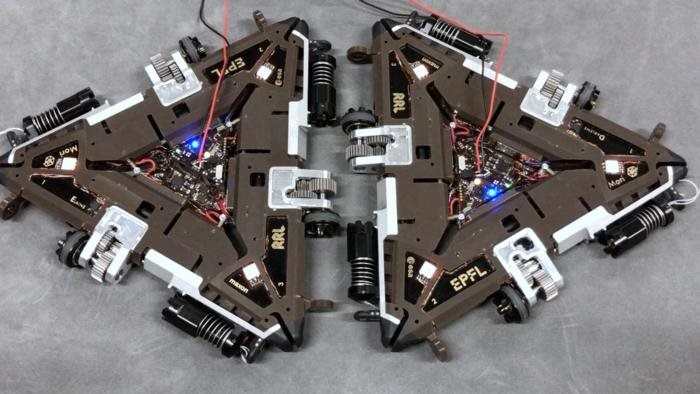
Mori3 features triangular modules that connect to form different configurations. (Image Credit: EPFL, RRL)
Swiss Federal Institute of Technology researchers developed Mori3, an origami-inspired shape-shifting robot capable of human interactivity, carrying cargo, and changing into several shapes and sizes. The team believes this could be a perfect bot for space missions.
The polygon bot features triangular modules connected with one another for 3D mesh formations that produce varying shapes based on the intended use case and environment. "Mori3 is an example of physical polygon meshing in a robotic system," the team wrote. "This work highlights how the architecture of physical polygon meshing provides a path to achieving a high degree of morphological flexibility in shape-changing systems. We further demonstrate the effectiveness and usability of recreating diverse 3D shapes in a physical, articulated form with interconnected and distributed intelligence by validating our approach in distinct robotic applications."
Polygon meshing wasn't an easy task to accomplish. The researchers looked at different aspects of robotics design, like computer systems and mechanical and electronic design. "We had to rethink the way we understand robotics. These robots can change their own shape, attach to each other, communicate, and reconfigure to form functional and articulated structures," says Christoph Belke, a Post-doctoral researcher in robotics. It took several trials and errors for the robot to walk, carry objects, and interact with people.
"Physical polygon meshing opens up new avenues for future robotic systems and has the capacity to transform anything from space missions, where the use of multiple single-purpose systems is not feasible, to interactive and assistive personal devices," the researchers said.
The robot can provide some much-needed assistance for space missions, thanks to Mori3's shape-shifting capability and modular design. In one case, Mori3 could be used for repairing damaged areas outside the spacecraft or for communication.
"Polygonal and polymorphic robots that connect to one another to create articulated structures can be used effectively for a variety of applications," Jamie Paik, director of the Reconfigurable Robotics Lab, says. "Of course, a general-purpose robot like Mori3 will be less effective than specialized robots in certain areas. That said, Mori3's biggest selling point is its versatility."
Have a story tip? Message me at: http://twitter.com/Cabe_Atwell
